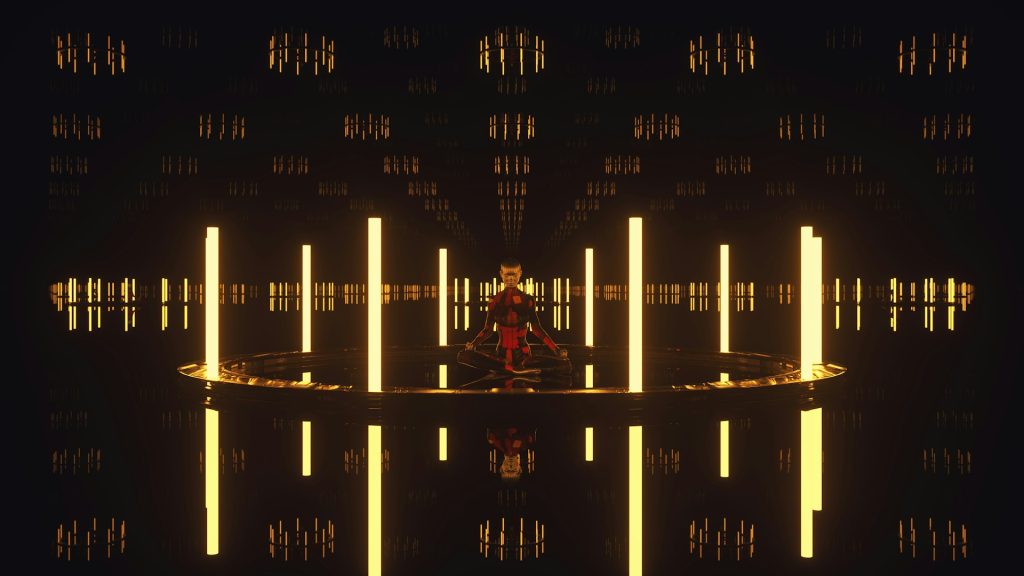Table of content
However, one of the most important decisions you will have to make is the choice of a web application technology lying at the core of your project.
The tech stack should fit your unique requirements, ensure scalability, and help you achieve your business goals. On top of that, this set of technologies, tools, and frameworks will significantly impact your product’s future. If chosen wisely, the right stack will help your business grow without constant pitfalls snowballing into time- and cost-consuming challenges.
But how to choose a web application tech stack that will be future-proof, stable, and budget-friendly? This post will help you find out. We will rely on DevoxSoftware’s rich experience in web app technologies to explain all you need to know about the most common tech stack types, their basic components, and things to consider when choosing making your choice.
What is a Technology Stack for Web Application Development?
Few beginners know what the technology stack is. Competent professionals will answer this question without a hitch. The web technology stack is a full kit of popular, modern, and well-functioning data processing languages. This concept also includes frameworks and various operating systems used to develop websites, web products, and mobile freeware. In fact, it includes a whole combination, having certain elements that can make the software multifunctional and completely developed.
What Are the Components of Web App Technology Stack?
In a nutshell, the technology stack for web development can be distinguished into only two categories, especially when it comes to large-scale projects. These are the client-side tech stack and the server-side tech stack. The client-side technologies are responsible for what the end-users directly interact with when using the web app. The server-side stack, in turn, is all about your app’s internal infrastructure, databases, and overall functioning.
Front-end Development
This operating system is involved in the client-side criterion. The platform gives you a chance to make the web app fully visible in any browser. Its main goal is to demonstrate the reciprocity and interactivity of consumers with web freeware.
Back-end Development
This freeware belongs to the second category – the server side. The technology functions behind the scenes so that the interface is fully operational. This system involves providing the created web product with a logical structure and can greatly facilitate the connection between the elements. The platform additionally has distinctive characteristics in the form of data processing languages, libraries, and servers.
Database
You can implement web apps and launch them without a database. However, in such software, the functionality will be significantly limited. Database technologies are required for ensuring the safety of information serving the dynamic operation of the created web product. It’s necessary when the application requests specific personal information from the users. That’s why all innovative and competitive web applications involve a system of at least one directory, which is fulfilled in the IT project throughout the creation procedure.
Server
The back-end assumes a certain location that helps handle the information. In fact, when a user realizes some request on a device, this very request is processed by switching or making a transition. The stack, of course, should involve a server wherein the IT specialists can easily host the designed web app. Today, some of the most well-known servers are Nginx and Apache. Also, the team operating on the draft should remember one of the extensions – there is a goal to pick out a freeware and a back-end environment.
The Most Popular Web Application Stacks
When developing new software, the development team selects an interface environment and several programming languages, including libraries. Developers can use ready-made techniques, such as CI/CD, and solid combinations, including options, components, and tools. Thus, they can simplify IT procedures for the web design process. Besides, a proper technology stack for web applications is supposed to correspond to your project’s specifics. Mostly, it depends on your web app’s features and other tech requirements, including back-end complexity and databases.
Here are the most popular web application development technologies and tools you may opt for when choosing a tech stack for your project.
LAMP
This is one of the famous examples. The fact is that a party line is completely safe, flexible, and has many diverse and interesting settings. The complex is established on the world-famous Linux OS. Its operation is powered by a server called Apache. The platform also includes a MySQL info directory and a lingo for PHP programmers.
Python-Django
In this case, the name speaks for itself. At the same time, the main thing in innovation is a well-known language for IT programmers called Python. Regarding the construction, Django is designed for internal implementation designing. In fact, this choice for many IT professionals will be the perfect clarification, especially when there is an exigency to deploy a fast-functioning MVP for PCs or mobile devices.
MEAN
This platform involves a popular execution environment, Node JS, one of the MongoDB libraries, and Angular for the main interface. It is precisely this methodology that is applied to carry out the full-fledged creation of a digital result. The stack is suitable for internal web creation and is applied by fairly well-known global brands, firms, and organizations worldwide. Some of the greatest benefits you can gain with the MEAN stack are scalability and perfect execution.
MERN
The stack is veritable, suitable for designing front-ends, and interacts well since it’s founded on the Node JS substructure. A demanded set of instruments was introduced into the high-tech, which is fully acceptable for executing the task of customizing implementations when building either a one-page web product or a huge one.
How to Choose the Right Technology Stack for your Web Application
Sometimes, even for experienced information processing experts, choosing a stack may be too difficult. Each individual component, tool, template, and technological part has some strengths and weaknesses. If you select the wrong web technology stack, it will be too unrealistic to implement a business idea hereafter, and the plan may not be executed at all.
So how For this reason, there are several points worth paying attention to.
Project Type and Size
For small IT projects, professionals can use the most lightweight, simple stacks, such as Python-Django. But when it’s required to prepare a full-fledged stack, then programmers choose a more popular one, for example, NodeJS-React. As for business drafts of medium dimension, web platforms like MEAN, MERN, etc., may be suitable. Large-scale digital results involve powerful innovations. For instance, it could be Angular JS, with plenty of variable and productive purposes, tongues, and instruments.
Time to Market
When selecting one or another web software stack, the temporary resource factor is taken into account. And this means that there is a requirement for a quick sale of an IT draft in the shortest possible time. That’s the moment when a programmer should think about integrating third-party web products and diminishing the time spent on creating an application. For example, MEAN, in a situation where speed is important, can be an ideal solution.
Flexibility and Scalability
These criteria will play a key role, especially when an IT professional creates a digital product with the intention of scaling it further. And here, you should make real calculations. For example, you need to understand the peculiarities of entrepreneurial activity, sort out the proper web instruments for them, and compare the actions. All those processes will require you to spend a certain amount of time.
In this case, experts use popular frameworks that allow you to implement flexible conditions when you must form a professional execution and then scale it up (of course, if the plan is viable for the modern market, the buyers like it, and the demand continues to grow).
Product Specification and Functionality
Before selecting a web application stack, the development team should clarify many points with the client. As a pattern, they can discuss what kind of idea they want to introduce to the modern market, what the output parameters will be, and how much functionality the project should get. Depending on this, you may build on which set of artificial languages will have to be operated.
Security and Privacy
Here we are talking about using these important options – the right decision would be to turn to professionals. Only experienced experts in the IT field, aware of which stacks and for which IT projects need to be selected, can advise, answer all questions, and test the concluded web design. At the same time, specialists will take care of safety and confidentiality, as well as the effective operation of the web product.
Tech Stack Ecosystem
When developing digital software from scratch, you need to take care not just of selecting the proper innovative stack. You should also ensure that the deployed app is multifunctional, obtains a simple interface, and is intuitive for ordinary users. Also, it’s supposed to be completely safe, not harming computer systems and programs, mobile electronic devices, and most importantly – people who will use web development. Experts must be careful about the realization of freeware and forget about personal wishes or warnings.
Web App Tech Stack Cost
The project’s cost is another factor to consider when choosing a web app technology stack. Here, it’s worth asking yourself several critical questions:
- Does a particular technology have a sufficient developers’ community?
- What is the average hourly rate of the required talents?
- Will you outsource software development or build an in-house team?
| Average developer hourly rate (USA) | Average developer hourly rate (Eastern Europe) | |
|---|---|---|
| LAMP stack | $47 per hour | $39 per hour |
| Python-Django stack | $62 per hour | $46 per hour |
| MEAN stack | $60 per hour | $45-50 per hour |
| MERN stack | $65 per hour | $55 per hour |
Source: talent.com
Technology Stacks of Successful Web App Projects
There is no one-size-fits-all solution when it comes to the choice of the best tech stack for web app. Every project is unique, so the technology should be tailored to its specific components and requirements. Let’s look at several examples of successful web application projects that managed to succeed using various programming languages and frameworks.
LAMP Stack Examples
- Facebook. Originally, Facebook was developed with the good old LAMP stack. However, due to certain PHP limitations, it was later converted into C++ and Hack.
- WordPress. This famous web-based app is heavily related to LAMP and PHP. Today, the majority of LAMP websites are hosted and built based on WordPress CMS.
Python-Django Stack Examples
- Instagram. This extremely popular social networking website was developed based on Python. The need for agility and excellent performance was obvious, so the development team chose well-coordinated technologies and frameworks.
- Pinterest. Pinterest is another famous social media platform using Python and Django in its tech stack. Also, it’s worth noting that the developers moved the legacy web software from Jinja to React.js due to its better performance and larger developers community.
MEAN Stack Examples
- Vungle. This famous platform for mobile video ads uses the MEAN stack for its main website containing the company’s works and offering services.
- Sisense. This platform provides complex BI solutions for various business-related data. Sisense uses the MEAN tech stack to make the website work in real-time and deliver clients the required analytics.
Choose Web Application Technology Wisely
Absolutely all stacks in web development are intended for the deployment of up-to-date, integrated, and innovative web applications. It should be selected wisely – that’s the main principle that you really should adhere to. Moreover, experienced IT professionals can evaluate particular criteria of the draft, agree on a budget plan and framework on a deadline, and apply personal experience and seniority when choosing the technology.
Looking for a professional team to help you pick the best technology stack for web application? We at DevoxSoftware are ready to help! Our company has a well-established experience in many IT aspects, including DevOps, web design, and web app development. We are experts in Angular, .NET, Java, Python, React JS, Vue JS, and more. DevoxSoftware are ready to help! Our company has a well-established experience in many IT aspects, including DevOps, web design, and web app development. We are Get in touch to get professional consultation on the technologies that will perfectly fit your project’s unique requirements!














